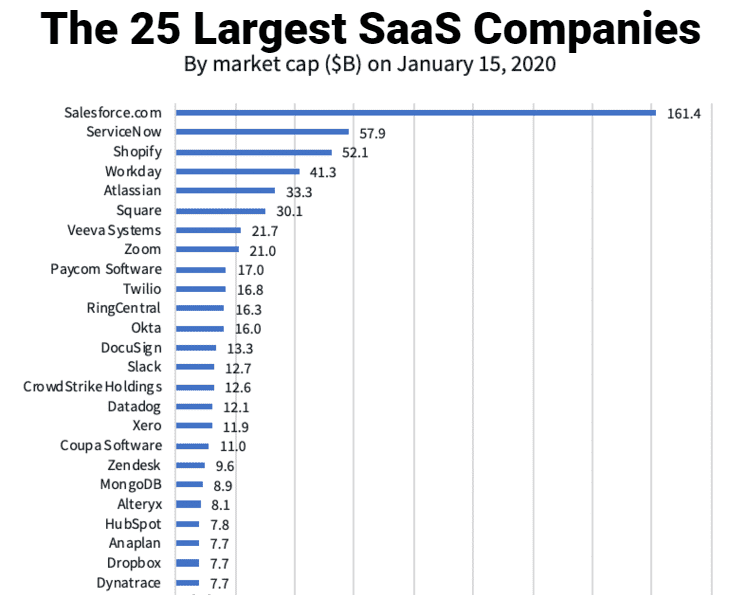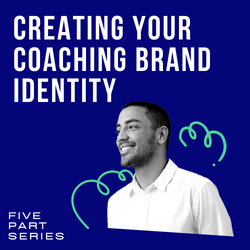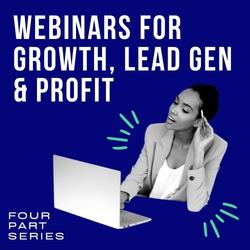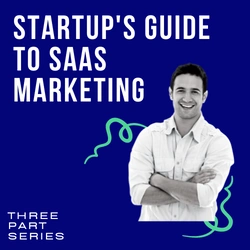A SERVERWISE THREE PART SERIES
The Startup's Guide To SaaS Marketing: The Basics
In this series we’re going to explore SaaS marketing starting with the terminology you must know to the first marketing steps you must take all the way to setting up your marketing funnels and using social media to grow quickly.
But first, let’s go over the basics.

What is SaaS?
Software as a Service (SaaS) is a set of strategies and tactics used to position and sell subscription-based products that are deployed via the "cloud" (marketing for Internet) which provides faster setups and scalable platforms. This reduces costs and time required for deployment while providing enterprise-level security, reliability, and adaptability without the enterprise price tag.
The SaaS Market Is Massive And Growing
Software-as-a-Service is not a trend, and it’s not going away…ever. Nothing can stop the juggernaut that is SaaS. 2020 has been a difficult for many businesses (and many people) but not even the economic downturn and pandemic could stop the sector that is valued at over $500 billion and growing. Investors, including Berkshire Hathaway (that invested in Snowflake) and Venture Capital firms, are tossing billions at SaaS companies and making many billions in return.
There are over 10,000 SaaS companies operating in the US. With the top 50 boasting a market cap of over $230 billion.
In the last few months, some SaaS took themselves public at offerings valued into the billions. Among them are Snowflake with an incredible $73B market cap, BigCommerce ($5.6B market cap), ZoomInfo ($17B market cap), Vroom ($6B market cap), and Kingsoft Cloud with an impressive $51B market cap.

SaaS Marketing Terms Defined
Customer Acquisition Cost (CAC)
In simplest terms the customer acquisition cost is the dollar amount it costs you to gain a new customer. For example, if you spend $500 dollars on YouTube Ads and get 15 paying customers, your CAC is $33.
Customer Lifetime Value (CLV, CLTV or LTV)
Customer lifetime value is how much an individual paying customer is worth to your business over time. If you sell a subscription for $25/month, and your average customer stays with you for 9 months, your CLV is ($25×9) of 6 months, your CLV is $225.
Customer Churn Rate
Customer churn rate is the percentage of customers that cancel your service during any period of time. This metric is particularly meaningful for subscriptions and SaaS companies.
Calculating churn rate is straightforward. Select a period of time and calculate the number of customers who cancelled. If you have 5,000 paying subscribers and 100 of them left in a month your monthly churn rate is only 2%.
Customer Onboarding
Customer onboarding is the process of getting users who signed up for a free trial (or freemium plan) to start using your service. After all, having 100 free trial signups are worthless if none of them actually try your service. You want a customer to use and rely on your service before you charge them – that greatly increases the chances of that customer becoming and staying a paying customer (which lowers your churn rate).
Monthly Recurring Revenue (MRR)
Monthly recurring revenue is exactly what it sounds like – the total amount of fees paid by your total number of customers every month. This figure won’t include one-time fees, setup fees or flat fees for annual subscriptions.
Using Free Trials To Market SaaS
Free trials or the freemium model (limited features of a service remain free) of marketing is used by nearly all major SaaS companies.
This type of marketing puts the service or product itself at the center of the marketing plan. While it’s easier to convert cold traffic and leads to a free service or limited trial offer, one must make sure the cost to provide the resources for the free users who do not convert to paid is worthwhile.
Some companies have split-tested and/or their cost of free-trial related resources is low enough to waste on users who sign up, try it out and cancel. Other companies use the free trial or freemium tactic as a means to quickly increase their user base in order to appeal to investors.
A deeply discounted trial such as offering a week of full service for only $5 often leads to higher conversions. A company will not receive as many users as would sign up for a free trial, but oftentimes will experience higher conversion rates. An individual who spends anything, even just $5, is far more interested in the service over someone who spends nothing.
CPC Campaigns Are Not For Startups
A digital marketing campaign running on Google and Facebook can be costly for nearly all keywords a new software-as-a-service business would be using. Take a look at some of these current top of page placement cost-per-click bids from Google Ads:
- $12.81 for CRM
- $8.33 for SEO
- $13.17 for Marketing
What does that mean to a new company with a limited budget? If your company is targeting CRM as a keyword, you need to be able to squeeze $13 out of each click, whether it converts or not.
The big companies are using their massive marketing budgets to dominate the most valuable keywords to any SaaS. Meaning, you need to get creative and put in some extra effort to get noticed and score some customers.
SEO for Organic Search Traffic
The majority of online experiences, including purchases, begin with an organic search. Simply put most purchases start with a potential customer typing relative keywords into a search engine.
Over 68% of online interactions with brands that lead to sales now begin this way, according to this handy PDF from BrightEdge.
Of course, catapulting your fresh new site and service to the top of these results for clicks isn’t easy. Good search engine optimization (SEO) and content marketing takes time, patience, strategy and effort, but it’s very doable and many others have.
If you’re primarily selling a B2B service, you’ll need to include organic search in your marketing strategy. 57% of businesses and marketers alike use organic search above all else. Nearly 60% of successful SaaS companies providing a business-to-business service has stated that this marketing method is their top lead generating channel.
Brands that began using mostly organic search to grow:
- Buffer
- Canva
- Intercom
- Investopedia
- HubSpot
- Zapier
- Zillow
Adding your brand to the list above doesn’t require you to spend thousands on content. You need only optimize your current content the right way.
The basics of search engine optimization aren’t complicated:
- Use SEO tools to identify short and long tail keywords that your buyers are searching for right now.
- Identify a selection of keywords with low competition.
- Creating landing pages, articles and other content that target those exact keywords and their common synonyms.
- Optimize each page and article for the search engines as well as for your target customer base.
- Develop relevant links, known as backlinks, from higher authority websites that have related content.
- Be patient because SEO built traffic will take time, so don’t expect results for at least 3 months.
- Analyze your site traffic and keywords regularly and make necessary adjustments quickly.
Now that we have all the basics of marketing a software as a service business out of the way. And now that you know the fundamental terminology, we can move on to creating and setting up your lead generating SaaS sales funnel.

Double conversions on your webinar landing page overnight by including these five must-have elements. Keep Learning >

Free trials are tough with successful conversions barely getting by at only 11%. But there are things you can do to improve your odds. Keep Learning >



